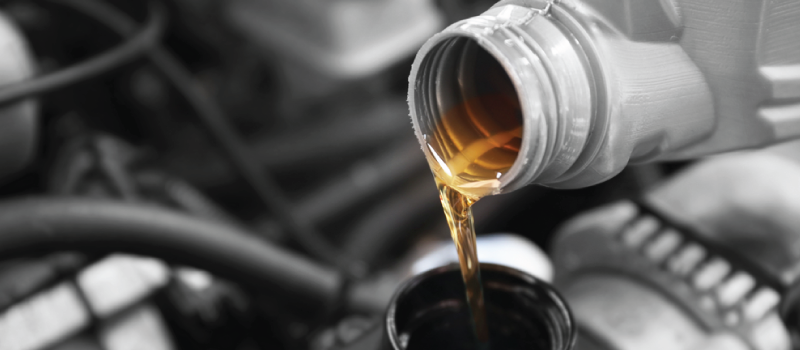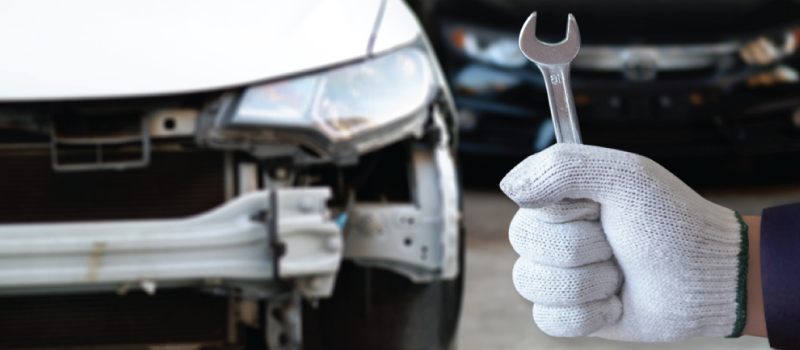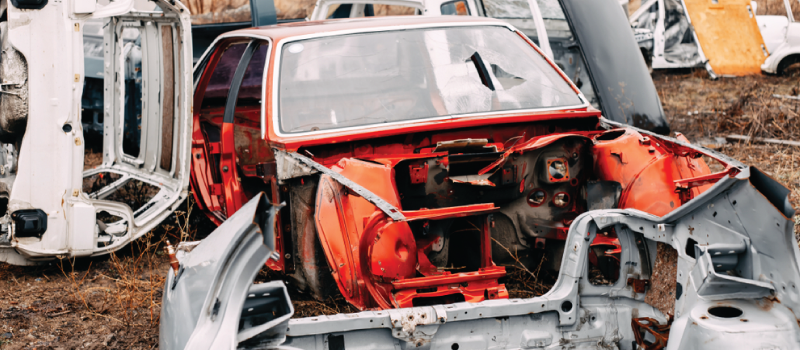
How our scrap yards recycle your car: Dismantlement
30th Oct, 2018
Welcome to the second post in our three-part series on how we recycle your car. So far, we’ve covered de-pollution, so we’ve still got dismantlement and destruction still to go. This week we’re looking at dismantlement; giving you a bit more insight into exactly how your scrap car gets taken apart at one of our Authorised Treatment Facilities.
Making sure the vehicle is fully depolluted
The process
If you read our post last week on depollution, you’ll already be pretty clued up as to what gets recycled when we depollute your car, so we’ll keep the recap brief. First the engine hoses and wires are all disconnected, as is the transmission exhaust system. From there, all the fuel, oil, coolants and transmission fluids are drained. As we mentioned the other week, the battery is disconnected at this stage, and any explosive parts (like the airbags and pre-tensioners) are removed or set off in situ.
How these parts are recycled:
In almost every case, any fluids and oils that are still usable are simply saved for use in another vehicle. Here’s a quick fact for you; the fluid reclaimed by recycling scrap cars each year is equivalent to 8 Exxon Valdez disasters. That’s well over 80 million US gallons, in case you’re wondering!

Dealing with the engine
The process:
As one of the single biggest components of the scrap car, the engine is the first target for dismantling. It’s just a matter of lifting it up and out of the car, before it’s skilfully separated into its component pieces. The battery is also removed, and set aside in a clearly-labelled, acid-resistant leak-proof container. (UK law is quite strict about this, as it is in many countries around the world.) The alternator belt and alternator itself are both disconnected, and the radiator and fan are also taken out of the scrap car. The carburettor is removed in a similar manner.
How these parts are recycled:
As a planet, we’ve gotten very good at recycling car batteries. They’re one of the most recycled products in the entire industry, with a 98-99% recycling rate. Not bad, all in all! Engines, meanwhile, are sometimes remanufactured to new standards to be put back into other cars. This isn’t necessarily standard practice, though – it’s generally only applicable if that particular model is on demand for spares. In most cases, unwanted gear boxes, engines in poor repair, and other steel car parts are dismantled to send them for shredding and repurposing elsewhere.

Stripping the undercarriage
The process
Using specialised equipment, the car is lifted into the air so that engineers can more easily access the undercarriage. There, they remove the transmission and exhaust, and unscrew the brake pads and the rotors. The drums, shoes and brake lines across the undercarriage are all cleared out, and the tyres are carefully removed.
How these parts are recycled:
For the last few decades it’s often been a struggle to find re-uses for car tyres, but gradually we’re finding useful new homes for them. If they’re only part-worn and in decent enough condition, they can simply be passed straight on for use in another vehicle. If they’re beyond re-use on the other hand, they can be used as road beds on racing or running tracks, or even as playground mulch.
It’s a well-known fact that catalytic converters are extremely valuable, too. Part of the reason for this is because of all the precious metals used in their construction, such as palladium, rhodium and platinum. These metals can be extracted and used in various pharmaceuticals, electronics and jewellery, or just manufactured into brand-new catalytic converters.
Taking apart the main body of the car
The process:
This is the stage at which the blowtorch sees a bit more action! Now, the fenders, bumpers and bonnet of the car are all removed completely, and the windows are carefully cut out of what remains. The lights are carefully taken off, and the doors are separated from the bodywork. That leaves car recycling experts to cut the rear panels and roof supports, and then the roof is lifted cleanly off.

Then, the engineers turn their attention to the interior of the car. The dashboard, seats and carpeting are all taken out, as well as any remaining circuitry and electronics inside. Finally the chassis is cut into smaller component pieces with a blowtorch, ready to be shredded.
How these parts are recycled:
You almost certainly don’t need us to tell you that plastic is a bit of a global hot topic right now, and the pressure is on for many businesses to ensure they’re recycled correctly. Some plastic components are made into carpeting, while others are simply broken down to be remanufactured into new plastic parts (such as dashboards) for newer vehicles.
Other materials are far easier. Steel is a major material in construction, so as you’d expect, it’s one of the easiest to recycle. In fact, 40% of the ferrous metal in the scrap industry comes from dismantled cars. Recycling glass from scrap cars is similarly easy – it’s incredibly versatile, and unlike some materials it can be recycled over and over again. It can be rebuilt into more glass, glass ornaments, tiles, doorknobs, or even shredded into builder’s sand.
That’s the tricky bit – next comes the even more exciting stuff: destroying it! When there’s nothing left to recycle from your car, it’s time to crush and dispose of what’s left. Only licenced specialists are authorised to do this in the UK, known as Authorised Treatment Facilities. We only ever partner with ATFs here at Scrap Car Network, so we can guarantee responsible recycling of your car! Find out why we’re the top choice for so many people across the UK – enter your car reg and postcode onto our homepage to scrap your car today!